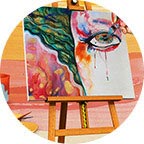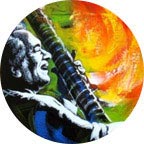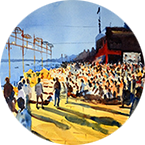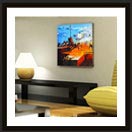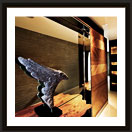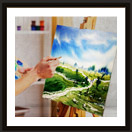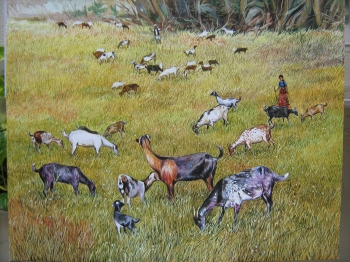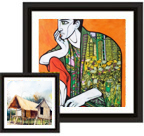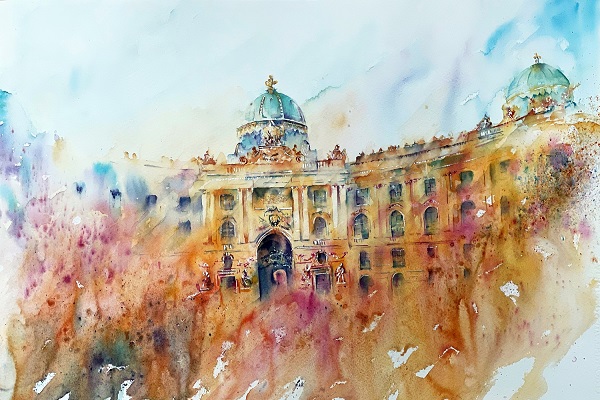
Vincent Van Gogh once said, 'I dream my painting, and then I paint my dream.' This statement encapsulates the essence of art. Art is a conversation—a dialogue between the artist and the canvas, a symphony of colors and emotions. In this dynamic world of artistic expression, two mediums stand out with their unique allure: watercolor and oil paintings. But before we delve into the strokes and hues that define these artistic realms, let's ponder: What truly sets watercolor and oil paintings apart? Are they rivals or kindred spirits in the vast palette of creativity? Join us on this visual odyssey as we navigate the realms of watercolor and oil, uncovering the secrets that make each stroke a masterpiece.
Exploring Watercolor Painting
Watercolor painting is an enchanting world where every brushstroke tells a story, and every hue captures a moment in time. Whether you're a seasoned artist or just dipping your brush into the waters of creativity, the world of watercolor invites you to explore, experiment, and discover the endless possibilities that flow with every drop of pigment.
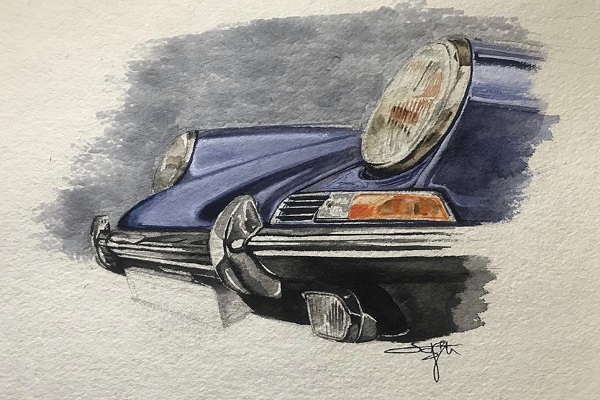
Characteristics of Watercolor Paintings
Let's explore the qualities that make watercolor a timeless and mesmerizing form of artistic creation.
1.Transparency and Luminosity
Watercolor's charm lies in its ethereal transparency and luminosity. Unlike other mediums, watercolor pigments allow light to pass through. Thus creating a captivating, almost magical, effect. Each layer builds upon the last, weaving a delicate tapestry of hues that dance with brilliance.
2.Quick-Drying Nature
One of watercolor's defining features is its swift drying time. This characteristic demands a certain finesse from the artist, encouraging spontaneity and adaptability. The rapid-drying nature of watercolors enables artists to layer colors without waiting. Thus adding an element of unpredictability to the creative process.
Techniques in Watercolor Painting
Read on to learn the techniques that breathe life into watercolor masterpieces.
1.Wet-on-Wet
In the wet-on-wet technique, the paper is wet before applying the paint. This results in colors bleeding and blending seamlessly, creating soft edges and a dreamlike quality. It's a technique favored for creating atmospheric and expressive scenes. Thus allowing the artist to surrender to the unpredictable flow of pigments.
2.Dry Brushing
On the flip side, dry brushing involves using a relatively dry brush on dry paper. This technique accentuates texture and fine details, giving the painting a more controlled and defined appearance. Dry brushing is the go-to for intricate work, offering precision in strokes and highlighting the artist's deliberate touch.
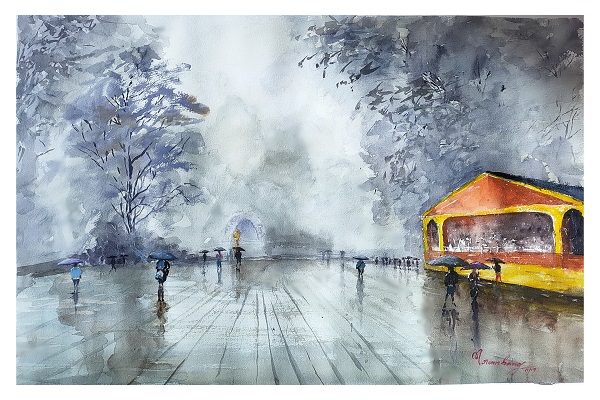
Read More: Presenting Watercolor Paintings as Meaningful Gifts
Pros and Cons of Using Watercolor
In the artistic mediums, watercolor stands as a luminary, offering a unique set of advantages that beckon both novices and seasoned artists.
-
Versatility: Watercolor adapts effortlessly to various styles, from loose and expressive to detailed and intricate.
-
Portability: With its compact and easy-to-transport materials, watercolor allows artists to create wherever inspiration strikes.
-
Economical: Watercolor paints, brushes, and paper are generally more affordable than some other art mediums.
Let's explore the subtle intricacies that add depth to the watercolor artistry but also pose unique challenges
-
Unforgiving Nature: Mistakes are less forgiving in watercolor due to its transparent quality, requiring a strategic approach to corrections.
-
Limited Opacity: Achieving deep, opaque colors can be challenging, making it less suitable for certain artistic intentions.
-
Paper Sensitivity: The choice of paper significantly influences the outcome, and not all papers are equally receptive to watercolor techniques.
Diving into Oil Painting
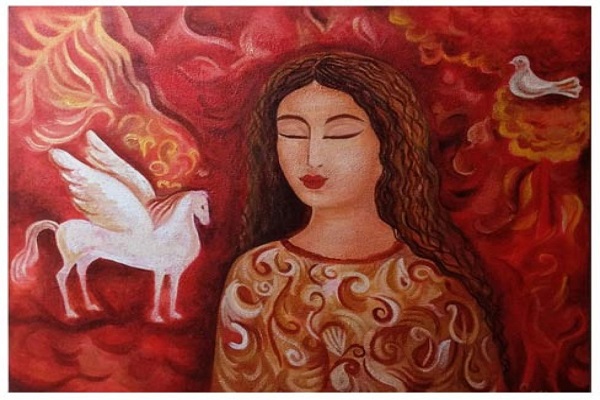
Art has a way of transcending time, and within the vast world of artistic expression, oil painting emerges as a captivating realm. Let's embark on a journey into the heart of oil painting, exploring its distinctive characteristics, techniques, and the nuanced pros and cons that shape its allure.
Characteristics of Oil Paintings
The characteristics of oil paintings weave a rich tapestry of color, texture, and depth, offering artists a medium that transcends mere representation.
1.Rich and Vibrant Colors
Oil paintings are renowned for their ability to capture and showcase colors with unparalleled richness and vibrancy. The medium's inherent depth allows artists to create palettes that pop with life, infusing each stroke with a visual intensity that is both captivating and enduring.
2.Slow-drying Texture
Unlike the swift drying of other paint types, the slow-drying nature of oil paints provides artists with a unique advantage. This extended drying time allows for intricate detailing and blending. Thus enabling the creation of nuanced textures and transitions that breathe life into the canvas.
Techniques in Oil Painting
As we delve into the heart of this timeless medium, our focus turns to the intricacies of techniques that breathe life into the artist's vision.
1.Glazing
Among the various techniques in the oil painter's toolkit, glazing stands out as a method that adds layers of translucent color to achieve a radiant effect. By delicately applying thin layers of pigments, artists can create luminous depth, enhancing the visual impact of their work.
2.Impasto
The technique of impasto involves the application of thick layers of paint, sculpting the surface of the canvas to create a three-dimensional effect. This tactile approach adds a tangible quality to the artwork, inviting viewers to not only see but also feel the textured strokes beneath their gaze.
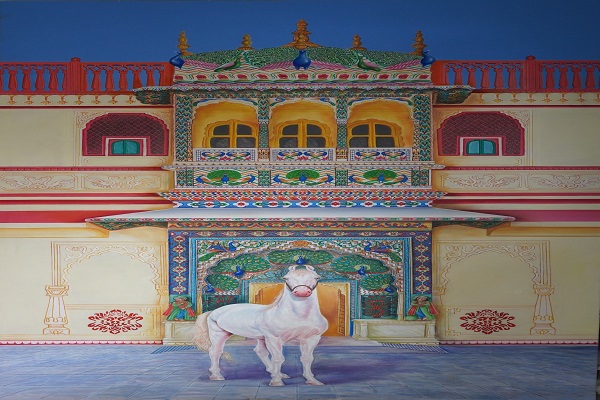
Pros and Cons of Using Oil Paint
In the symphony of artistic expression, oil painting stands as a maestro, conducting a harmonious blend of color, texture, and enduring brilliance.
-
Versatility: Oil paints offer unparalleled versatility, allowing artists to experiment with various styles and techniques, from realistic portraits to abstract expressions. This adaptability makes oil painting an ideal medium for artists exploring diverse creative landscapes.
-
Long-lasting Brilliance: The slow drying time of oil paint contributes to the longevity of the artwork. The vibrant hues endure over time, ensuring that the artist's vision retains its vividness and lasting impact for generations to come.
As we delve into the rich realm of oil painting, it's crucial to recognize that each masterpiece comes with its own distinct set of challenges.
-
Drying Time: While the slow drying time is an asset for some, it can be a drawback for those seeking a quicker creative turnaround. Waiting for layers to dry can test the patience of artists working under time constraints.
-
Materials and Cleanup: Oil painting involves the use of specific materials like turpentine for cleaning brushes and thinning paint. The necessity for these materials adds an extra layer of consideration and care to the artistic process.
Watercolor Paintings vs Oil Paintings
We have prepared a table for a concise overview of the key differences between watercolor painting and oil painting.
|
Feature |
Watercolor Painting |
Oil Painting |
|
Color Vibrancy |
Transparent and luminous; subtle hues |
Rich and vibrant; intense and deep colors |
|
Drying Time |
Quick-drying, often within minutes |
Slow-drying, allowing for extended working and blending time |
|
Texture |
Smooth and often paper-like texture |
Textured and three-dimensional, especially with impasto |
|
Techniques |
Wet-on-wet, dry brushing, layering |
Glazing, impasto, scumbling |
|
Versatility |
Well-suited for delicate, expressive work; can be less forgiving |
Highly versatile, accommodating a wide range of styles |
|
Surface Compatibility |
Typically used on paper or specialized watercolor paper |
Can be applied to various surfaces, including canvas, wood, and more |
|
Layering |
Limited layering capacity due to transparency |
Allows for multiple layers, building depth and complexity |
|
Cleanup |
Easily soluble with water; minimal cleanup required |
Requires specific solvents (e.g., turpentine) for cleanup |
|
Durability |
Generally more delicate; may be susceptible to fading over time |
Colors retain vibrancy and resist fading over the long term |
|
Dilution |
Diluted with water for lighter shades |
Diluted with turpentine or linseed oil for various effects |
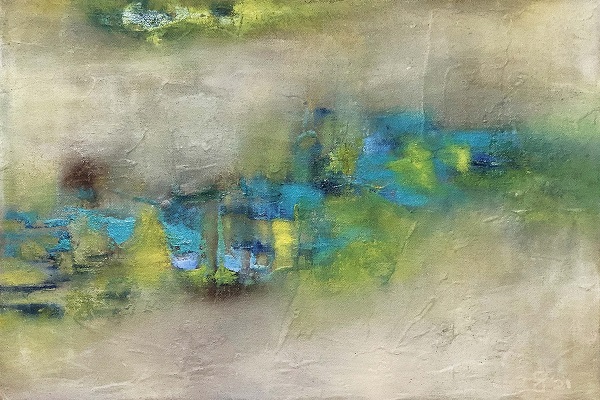
Interesting Blog: Oil Paintings by Famous Artists
Wrapping Up
Watercolor painting's versatility and portability beckon artists to explore the ever-flowing river of creativity. However, the unforgiving nature and the paper's sensitivity remind us that mastering this medium requires a unique finesse. On the other side of the canvas, oil painting stands as a timeless maestro, weaving vibrant colors with a slow-drying embrace. The versatility of techniques like glazing and impasto allows artists to sculpt emotions onto the canvas. Yet, the prolonged drying time and specific material requirements present challenges that contribute to the intricate symphony of oil painting.
Your exploration of the intricate world of watercolor and oil paintings doesn't have to end here; it's a gateway to a richer, more vibrant artistic journey. At Indian Art Ideas, we invite you to take the next step in transforming your living spaces into galleries of unparalleled beauty.
FAQs:
Which is better, watercolor or oil painting?
The choice between watercolor and oil painting depends on personal preference and the desired artistic outcome. Watercolor excels in delicacy and spontaneity, while oil painting offers rich vibrancy and enduring depth. The "better" medium is subjective, as both hold unique allure in the vast palette of artistic expression.
Can you paint with oil on a watercolor canvas?
Yes, you can paint with oil on a watercolor canvas. However, it's important to properly prime the canvas with gesso to prevent the oil from soaking into the fibers. It ensures a stable surface for oil painting and allows for the creation of stunning mixed-media artworks.
Can you watercolor on the fabric?
Yes, you can watercolor on fabric! Using watercolor paints designed for fabric or by pre-treating the fabric, you can create vibrant and unique designs on various textile surfaces. Just ensure to follow proper techniques and fixatives for a lasting result.



